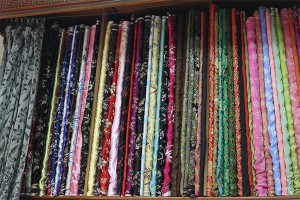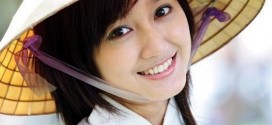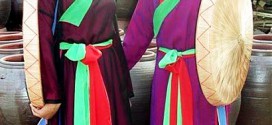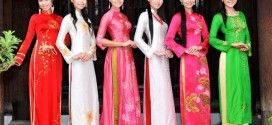 Silk is the most precious finery of the orient. Some say silk was invented so that women could go naked in clothes. A more whimsical tale even credits a fourteen – year old Chinese empress with this invention.
Silk is the most precious finery of the orient. Some say silk was invented so that women could go naked in clothes. A more whimsical tale even credits a fourteen – year old Chinese empress with this invention.
For centuries, the wearing of silk was the exclusive right of the Chinese nobility, so the know-how of sericulture, and the weaving of silk was a zealously guarded secret. Even today, more than 4,000 years after its invention, sericulture is almost confined to Asia.
Of all the natural fibers, silk has the greatest affinity for color, yielding shimmering, brilliantly-hued fabrics.
Diversified in colors, weave, and quality, various kinds of silk products all help highlight a distinctive feature of Vietnamese culture. With almost all silk shopping destinations located at the center of Hanoi and Ho Chi Minh city, it features Vietnam style in visitors’ eyes.
Hang Gai, dubbed Silk Street, is obviously a right place to shop for silk in Hanoi, where choices are sometimes overwhelming. Located on the edge of the Old Quarter near Hoan Kiem Lake, Hang Gai consists of two or three blocks of small shops that all specialize in silk and embroidery. The merchandise at the various stores is similar, however, the prices, selection and the service vary. Whether you are looking for a silk T-shirt or a custom-made suit, Le Minh has it all.
Le Minh has been offering quality tailoring at reasonable prices since 1954. The shop is run by two sisters, Bich Hanh and Thuy Ha, who learned their trade from their parents and hope to pass it along to their own children. Le Minh has one of the city’s best selections of silk. Bolts of fabric in every possible color, texture and pattern are stacked from floor to ceiling. There is raw silk, patterned silk and Danang silk (it looks tie-dyed). If you want to have something made, you can choose from one of Le Minh’s existing designs, bring your own clothes to copy or just show them a picture (simpler is better).
It takes two days to make a silk suit, but if you don’t have time to have something made, ready-to-wear inventory is extensive. There are Western and Vietnamese clothes. The most popular item is the Vietnamese style shirt in raw silk with a mandarin collar and traditional frog closures.
Silk shops, including Le Minh, are also places where you can end up buying most of the gifts. There are silk ties, clothes, fabric, embroidered tablecloths, place-mats, napkins, and wall hangings. Written instructions are given on how to care for your purchases.
In Vietnam, there are two main areas being well-known for silk production: Ha Dong, Ha Tay and Bao Loc, Lam Dong. Silk production may be just a family affair, a co-operative, or even a larger business like silk factory in Bao Loc, of which family production is most prevalent.
The production of silk is rather sophisticated. It can be briefly described as follows.
The first step is to raise silkworms which are fed with mulberry leaves. A Fully grown one are about as long and as thick as a human finger, which grows faster at the properly adjusted temperature. On average, they take twenty-five to thirty days to develop from eggs to the cocoon-spinning stage.
When the cocoons are completed, they are selected, sorted and then sold to come into manufacture. During the production process, the cocoons are heated for killing the silkworms inside and then soaked in hot water to soften silk filament which is then wound onto reels.
Because single filaments are so fine, those from five to ten cocoons are wound together by drawing them through a porcelain guide and twisting them into a single fiber, glued together by the melted sericin. The reeled yarn made this way is called raw silk. The more sericin deposited on the filament, the lower the grade of the raw silk. Broken cocoons, partially joined ones, or those spun by two caterpillars together are inferior, and used much like cotton or wool to make spun silk.
Dyes are applied to raw or spun silk, or to woven fabrics after the sericin is removed by boiling. Stronger than any other natural fiber, the delicate look and feel of silk is deceptive. Silk is comfortable in hot weather too, because it absorbs moisture up to 30 percent of its weight without felling wet.
 Vietnamese Culture and Tradition
Vietnamese Culture and Tradition 


